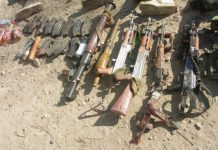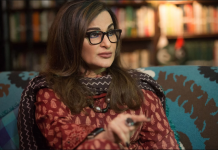Foreign Desk Report
BRUSSLES: NATO’s secretary General Jens Stoltenberg Friday called on Russia to be open about its “Zapad-2021” military exercises and the troop numbers involved as alarm grows in Poland, the Baltics and Ukraine about Moscow’s intentions.
Previous “Zapad”, or West, exercises along the border that Russia shares with NATO have been on a vast scale, according to allied officials, who say Moscow has habitually underreported their size despite international rules.
“Russia should behave in a predictable and transparent way,” NATO Secretary-General Jens Stoltenberg told reporters. The main phase of the exercises is due to start on Sept. 10. The Zapad maneuvers, which follow a Russian military buildup on Ukraine’s borders this year, heighten the risk of an accident or miscalculation that could touch off a crisis, NATO officials have said.
“What we have seen before is that the numbers of troops participating in the exercises significantly exceed the numbers announced,” Stoltenberg said, urging Moscow to meet its obligations under the Vienna Document, an international agreement governing military exercises in Europe.
According to a tally by NATO Review, an allied magazine, Russia deployed between 60,000 and 70,000 troops in Zapad-2017 but only declared 12,700 personnel.
Russia, which will join forces with Belarusian troops, says it is within its rights to exercise on its territory and is clear about the numbers involved. Belarus’s defense ministry said in August the exercises would be held at training grounds in both Russia and Belarus and will be based on a scenario where the two countries are under attack. “The reality is that since the end of the Cold War, Russia has never opened an exercise for mandatory inspections,” Stoltenberg said. “So we will be vigilant.”
Western experts believe the large-scale operations, using drones, missiles and new weapons, allow Russia to practice for any all-out war with the United States in Europe. NATO says it is a defensive alliance and is not looking for any conflict. Tensions are also high on the Belarus-NATO border after Minsk began pushing migrants into Lithuania to put pressure on the European Union, Western officials say, in response to EU sanctions on the Belarusian government.
Jens Stoltenberg said he supported European Union plans to build a common defense policy but he warned against any rapid reaction force that might duplicate allied operations.
EU defense ministers are considering creating a “first entry force” of 5,000 troops, saying the bloc needed to react to conflicts beyond its borders, spurred by the chaotic Western withdrawal from Afghanistan. “We welcome more EU efforts on defense, but that cannot replace NATO. It should not duplicate NATO, because we have one set of forces, we have scarce resources,” Stoltenberg said.
The EU’s efforts to create a force have been paralyzed for more than a decade, despite the creation in 2007 of a system of EU battalion-sized battlegroups of 1,500 troops that have never been used due to disputes over funding and reluctance to deploy.
“I mean you have to use them in the best possible way. The EU has had battlegroups for many years, they have not been deployed,” he said. NATO created a Very High Readiness Joint Task Force (VJTF) in the wake of Russia’s annexation of Crimea from Ukraine in 2014, with the United States contributing high-end military assets.
The EU, most of whose members are in NATO, says it must be able to act independent of its U.S. ally in the Western alliance, the world’s foremost military power, in Europe’s backyard to defend its own interests.




